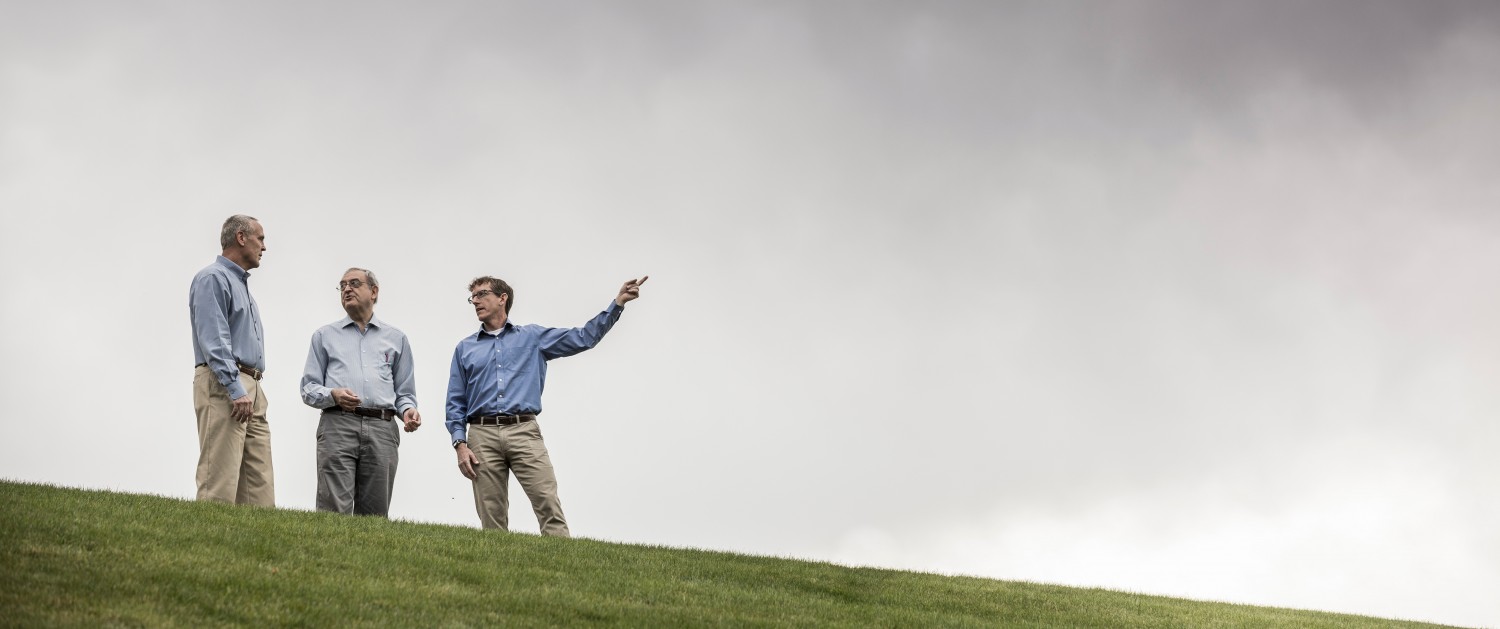Sunshine matters a lot to mental health; temperature, pollution, rain not so much

Sunshine matters. A lot. The idea isn’t exactly new, but according to a recent BYU study, when it comes to your mental and emotional health, the amount of time between sunrise and sunset is the weather variable that matters most.
Your day might be filled with irritatingly hot temperatures, thick air pollution and maybe even pockets of rainclouds, but that won’t necessarily get you down. If you’re able to soak up enough sun, your level of emotional distress should remain stable. Take away sun time, though, and your distress can spike. This applies to the clinical population at large, not just those diagnosed with Seasonal Affective Disorder.
“That’s one of the surprising pieces of our research,” said Mark Beecher, clinical professor and licensed psychologist in BYU Counseling and Psychological Services. “On a rainy day, or a more polluted day, people assume that they’d have more distress. But we didn’t see that. We looked at solar irradiance, or the amount of sunlight that actually hits the ground. We tried to take into account cloudy days, rainy days, pollution . . . but they washed out. The one thing that was really significant was the amount of time between sunrise and sunset.”
Therapists should be aware that winter months will be a time of high demand for their services. With fewer sun time hours, clients will be particularly vulnerable to emotional distress. Preventative measures should be implemented on a case-by-case basis.
The study, which was published in the Journal of Affective Disorders, started with a casual conversation that piqued Beecher’s professional curiosity.
“Mark and I have been friends and neighbors for years, and we often take the bus together,” said Lawrence Rees, a physics professor at BYU. “And of course you often talk about mundane things, like how are classes going? How has the semester been? How ‘bout this weather? So one day it was kind of stormy, and I asked Mark if he sees more clients on these days. He said he’s not sure, it’s kind of an open question. It’s hard to get accurate data.”
A lightbulb went off in Rees’ head. As a physics professor, Rees had access to weather data in the Provo area. As a psychologist, Beecher had access to emotional health data for clients living in Provo.
“We realized that we had access to a nice set of data that not a lot of people have access to,” Beecher said. “So Rees said, ‘Well, I’ve got weather data,’ and I’m like, ‘I’ve got clinical data. Let’s combine the pair!’ Wonder Twin powers activate, you know?”
The duo then brought in BYU statistics professor Dennis Eggett, who developed the plan for analyzing the data and performed all of the statistical analyses on the project.
Several studies have attempted to look at the weather’s effect on mood with mixed results. Beecher cited four reasons why this study is an improvement on previous research:
- The study analyzed several meteorological variables such as wind chill, rainfall, solar irradiance, wind speed, temperature and more.
- The weather data could be analyzed down to the minute in the exact area where the clients lived.
- The study focused on a clinical population instead of a general population.
- The study used a mental health treatment outcome measure to examine several aspects of psychological distress, rather than relying on suicide attempts or online diaries.
The weather data came from BYU’s Physics and Astronomy Weather Station, and the pollution data came from the U.S. Environmental Protection Agency. Mental and emotional health data came from BYU’s Counseling and Psychological Services Center.
The three BYU professors were just the beginning of the collaboration on this research. There are 10 other authors listed on the study, including Davey Erekson, Jennie Bingham, Jared Klundt, Russell Bailey, Clark Ripplinger, Jessica Kirchhoefer, Robert Gibson, Derek Griner, Jonathan Cox and RD Boardman. Both Ripplinger and Kirchhoefer are currently doctoral students in BYU's counseling psychology program.
More Information on This Article
News and Events














